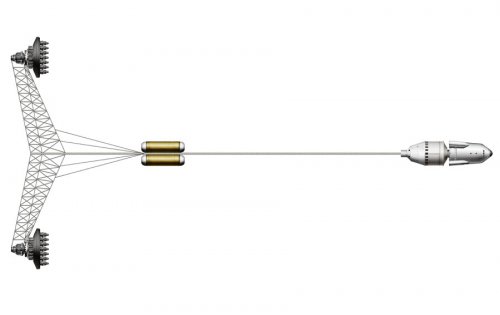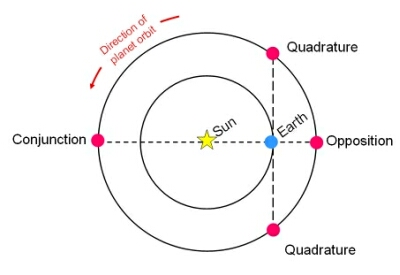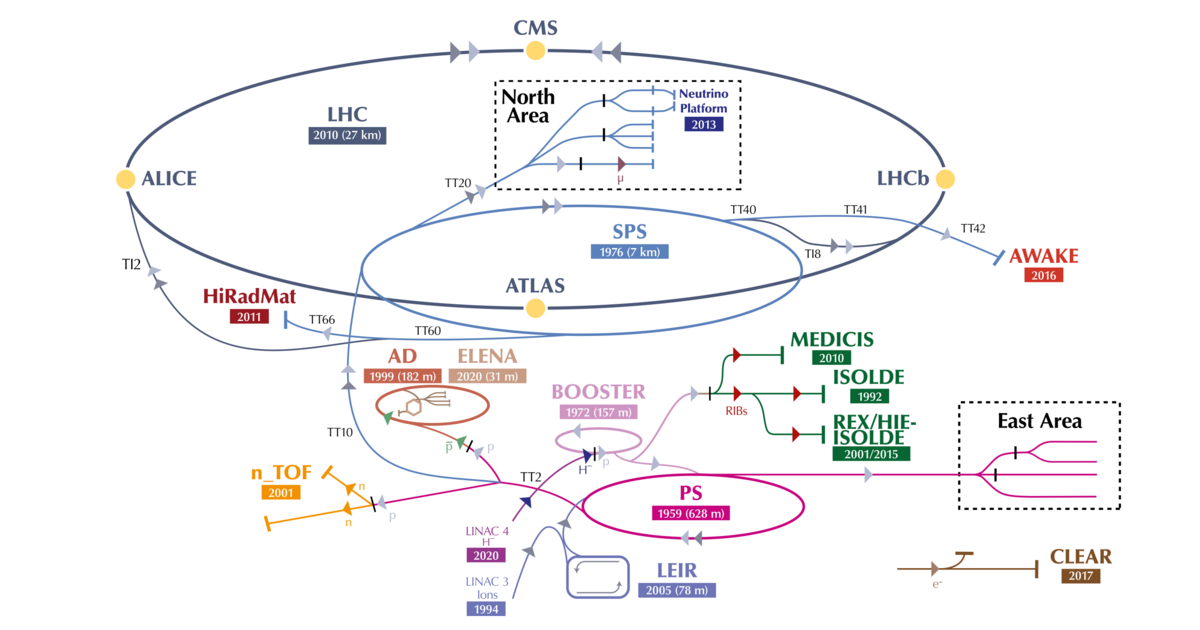An Antimatter Primer
As science fiction writers and readers know, rocket fuels don’t get much better than antimatter. Antimatter is, as far as physicists have been able to determine, just like normal matter, except that the charges on the particles are reversed. There appears to be an anti-particle for every particle known… anti-protons and positrons being the particles of greatest interest here. Where this is important is that since the charges of a proton and an anti-proton are reversed, they will attract each other (whereas protons repel each other), and, upon contact, they destroy each other and liberate surprising quantities of energy as related by E=MC². This is two orders of magnitude more energy released per kilogram than is done by nuclear fission reactions and about XXX more energy released per kilogram than by chemical reactions.
For antimatter based rocketry, the antiproton and the positron are the particles to pay attention to. Each proton is about 1800 times more massive than each electron; the same mass ratio applies for antiprotons and positrons, thus the energy density is vastly higher for an antiproton system than for a positron system. The functionally best systems will be those based on anti-hydrogen… while antiprotons will always remain a very low-density cloud of plasma (and positrons even more tenuous), anti-hydrogen will be far denser and easier to deal with in bulk. Clearly anti-hydrogen cannot be manipulated with pipes and pumps as hydrogen can, but it can, with effort and skill, be physically manipulated with magnetic fields.
Anti-hydrogen is the highest up the antimatter periodical table that can be realistically imagined for anything remotely resembling the near future. In order to produce anti-helium, two anti-hydrogen atoms would need to be fused together, and to make useful quantities of the stuff, a vast number of such fusions would be required. This would, obviously, require a very good fusion reactor with absolute control over every particle within it. We have not yet produced a decent hydrogen-based fusion reactor, and an anti-hydrogen fusion reactor would be much more complex. Worse yet, anti-helium would not buy the users much. It would be far more difficult to freeze to a solid and manipulate than would be anti-hydrogen; consequently, it would be a low-density cold gas… lower density by far than anti-hydrogen ice. To get to something really valuable, further fusion still would be required… and we simply have no good idea how to do that even with normal matter. For all practical purposes, barring some rather startling discoveries, the existence of anti-aluminum, say, or anti-iron will have to be predicated on the notion of finding a large lump of it floating in deep, low-dust space (which would be a startling enough discovery).
Anti-hydrogen is known to exist in the natural world, but the known sources are quasars and exploding galaxies many millions or billions of lightyears away. Antimatter needs to be manufactured. And it has been; the principles on how to make the stuff are well know. The process is, however, vastly inefficient, required many XXX times more energy input than the antimatter could ever unleash. Antimatter production today is spectacularly expensive, with estimates of $XXX per microgram of anti-protons. The cost is, however, decreasing; current production is entirely experimental, not true production line work; and it is safe to assume that new inventions and discoveries will improve the cost by several to many orders of magnitude.
And fortunately, the cost of antimatter does not need to drop to anything remotely like the cost of conventional materials in order for it to become cost competitive. A single stage launch vehicle with the payload capacity of the Space Shuttle would require only a few tons of water and 35 (xxx?) milligrams of antimatter to attain the same orbit.
As mentioned a little earlier, the antiproton and the positron are the two antiparticles of greatest interest for antimatter-based propulsion systems. There are other antiparticles, such as antinuetrons, but they would be even more difficult to manufacture and deal with, and would provide no advantages The physics of the different annihilation reactions will be described. Remember, the reader does not necessarily need to have all of this explained to him or her, any more than a reader of a novel that includes a jetliner needs to have the physics of high temperature multi-stage turbine combustors explained.
Proton-antiproton annihilation reactions do not produce the “pure energy” so often mentioned in science fiction, but instead release a small blizzard of lesser, but very energetic, particles. Specifically, the typical reaction will produce an average of 1.6 π0 mesons (or pion, without electrical charge) and 1.6 charged π+ mesons and 1.6 π- mesons (a pion with either a positive or negative electrical charge). These pions will both be moving at relativistic speeds. The combination of the rest mass of the particles (140 MeV for the charged pions and 135 MeV for the π0 meson) and their kinetic energy (about 252 MeV per pion) gives a total energy release of 1876 MeV (or about 3E-10 Joules). But the reactions aren’t over. The neutral pion nearly immediately (90 attoseconds) decays into two gamma rays with an energy of about 200 MeV each. The charged pions decay in about 70 nanoseconds (a range of about 21 meters in free space, as the pions are moving at about 94% lightspeed) to a neutrino and an unstable charged muon. The neutrino carries off about 22% of the charged pion energy; and given that there is no known way to capture neutrinos in numbers even remotely useful, this energy can be considered as lost. The muon in turn decays within 6.2 microseconds (or a range of more than a kilometer and a three quarters in free space) into two neutrinos and either an electron and a positron. Again, the neutrino energy is lost. The positrons can be expected to react with the electrons from other reactions (or with electrons in engine structures or propellants), giving off two 0.511 MeV gamma rays. The end result is that approximately 50% of the energy of an unintercepted proton:antiproton reaction will be forever lost as neutrinos.
The distance charged pions travel prior to decay is larger than most foreseeable rocket engines, and the gamma rays from the neutral pion can also be intercepted by a material structure of some type. Gamma rays are intercepted by material structures with exponential attenuation, which means that if one centimeter of, say, lead will absorb 90% of the gamma rays, another centimeter will absorb 90% of the remaining gamma rays, another centimeter will absorb 90% of the gamma rays that got through the first two centimeters, and so on. A further, more detailed discussion of gamma ray shielding is in the XXX chapter. While this means that modest increases in shield/heat exchanger thickness will greatly reduce the gamma ray flux, mathematically the gamma rays are never entirely blocked. Charged pions are a different story. They are not exponentially attenuated, but instead have definite ranges within certain materials, depending upon the kinetic energy of the pions. While gamma rays are eventually stopped by impacting atomic nuclei, the pions lose kinetic by excitation of the electrons of the atoms they move through.
It has been found that a cylinder of tungsten 28 centimeters in diameter and 28 centimeters in length would, if the proton:antiproton reaction were occurring in its geometric center, absorb virtually all of the initial 200MeV gamma rays, as well as the charged pions (by absorbing them prior to their decay, the energy that would have gone into neutrinoes is retained). This absorbed radiation can be used in a number of ways for propulsion, generally to transfer energy to a working fluid. Unfortunately, the absorption of the pions by the tungsten is through collisions with nuclei, with the result that not only is the pions energy absorbed by the tungsten, but the tungsten becomes a neutron emitter. The tungsten becomes radioactive (though not as bad as a nuclear rocket).
It is of course possible that some technology could be invented that would in some way utilize the energy otherwise lost through the neutrinos. But there is as yet no theoretical justification for such a system, and there are ways of utilizing the charged pions directly for thrust prior to their decay.
In contrast, electron

ositron reactions are much simpler… and have in fact already been described. The reaction gives off two 0.511 MeV gamma rays; these gamma rays are much more readily absorbed than are the pions.
), so I can't say whether this is a valid argument or just a marketing gimmick.




